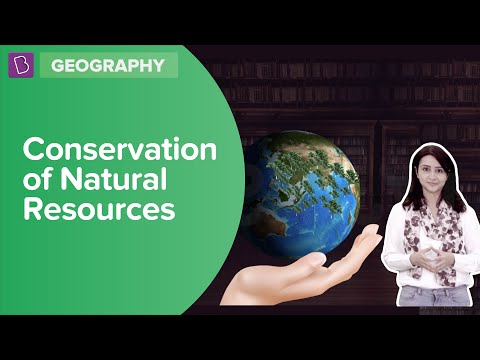The sun is the main source of energy on Earth. Other energy sources include coal, geothermal energy, wind energy, biomass, petrol, nuclear energy, and many more. Energy is classified into various types based on sustainability as renewable sources of energy and non-renewable sources of energy.
| Table of Contents: |
What Is Energy?
The classical description of energy is the ability of a system to perform work, but as energy exists in so many forms, it is hard to find one comprehensive definition. It is the property of an object that can be transferred from one object to another or converted to different forms but cannot be created or destroyed. There are numerous sources of energy. In the next few sections, let us discuss the about different sources of energy in detail.
Sources Of Energy
Sources of energy can be classified into:
- Renewable Sources
- Non-renewable Sources
Renewable sources of energy are available plentiful in nature and are sustainable. These resources of energy can be naturally replenished and are safe for the environment.
Examples of renewable sources of energy are: Solar energy, geothermal energy, wind energy, biomass, hydropower and tidal energy.
A non-renewable resource is a natural resource that is found underneath the earth. These type of energy resources do not replenish at the same speed at which it is used. They take millions of years to replenish. The main examples of non-renewable resources are coal, oil and natural gas.
Examples of non-renewable sources of energy are: Natural gas, coal, petroleum, nuclear energy and hydrocarbon gas liquids.

Difference between Renewable and Non-renewable Sources of Energy
| Renewable | Non-renewable |
| The resources that can be renewed once they are consumed are called renewable sources of energy. | The resources that cannot be renewed once they are consumed are called non-renewable sources of energy. |
| These resources do not cause any environmental pollution. | These resources cause environmental pollution.. |
| Renewable resources are inexhaustible. | Non- Renewable resources are exhaustible. |
| Renewable resources are not affected by human activities. | Non- Renewable resources are affected by human activities. |
| Examples of Renewable resources- Air, water and solar energy. | Examples of Non-renewable resources- natural gas, coal and nuclear energy. |
Natural Sources of Energy
During the stone age, it was wood. During the iron age, we had coal. In the modern age, we have fossil fuels like petroleum and natural gas. So how do we choose the source of energy?
Good sources of energy should have the following qualities:
- Optimum heat production per unit of volume/mass used
- Easy to transport
- Least Polluting
- Economical
Types of Natural Sources of Energy
There are two types of natural sources of energy classified by their popularity and use,
- Conventional Sources of Energy
- Non-Conventional Sources of Energy
Difference between Conventional and Non-conventional Sources of Energy
| Conventional | Non-conventional |
| These resources are exhaustible. | These resources are inexhaustible. |
| These resources cause pollution as they emit smoke and ash. | These resources are usually pollution-free. |
| These resources are very expensive to be maintained, stored and transmitted. | These resources are less expensive for local use and can easily be maintained. |
| Examples- coal, natural gas, petroleum, and water power. | Examples- solar, biomass, wind, biogas, and tidal, geothermal. |
In this article, you learned about natural resources, energy sources, and what makes a good source of energy. Explore more such articles at BYJU’S, which provides detailed solutions to the questions of NCERT Book for the energy source so that one can compare their answers with the sample answers given for this chapter.
Frequently Asked Questions – FAQs
What sources of energy are renewable?
- Biomass energy
- Wind energy
- Tidal energy
- Hydro energy
What is the main source of energy in India?
What are the sources of energy in India?
Following are the sources of energy in India:
- Coal
- Natural gas
- Thermal energy
- Mineral oil
Can any source of energy be pollution-free?
What are the advantages and disadvantages of wind power?
- There are no harmful gases released into the environment.
- It is a way for the generation of revenue in the local communities.
- It is one of the clean sources of energy.
Disadvantages:
- The storage of energy needs to be improved.
- The initial setup requires a lot of investment.
- Numerous lands will be used up.
List the examples of sources of energy
- Biofuel energy
- Hydropower
- Geothermal energy
- Solar energy
- Nuclear energy
- Tidal energy
- Wind energy
Watch the video and find out conservation measures we can take to save the natural resources depleting at an alarming rate.

Stay tuned with BYJU’S for more such interesting articles. Also, register to “BYJU’S – The Learning App” for loads of interactive, engaging Physics-related videos and unlimited academic assistance.

Comments